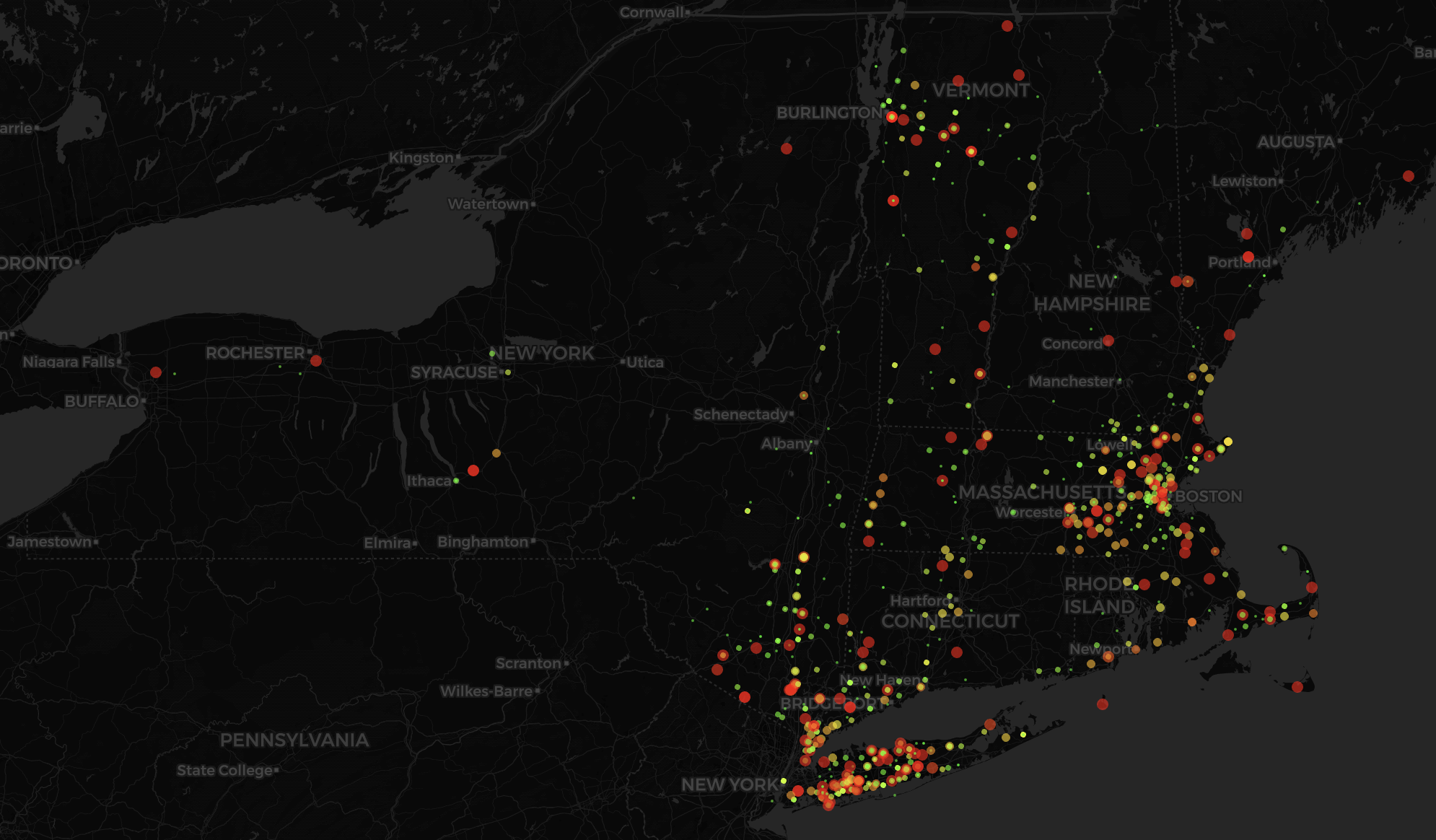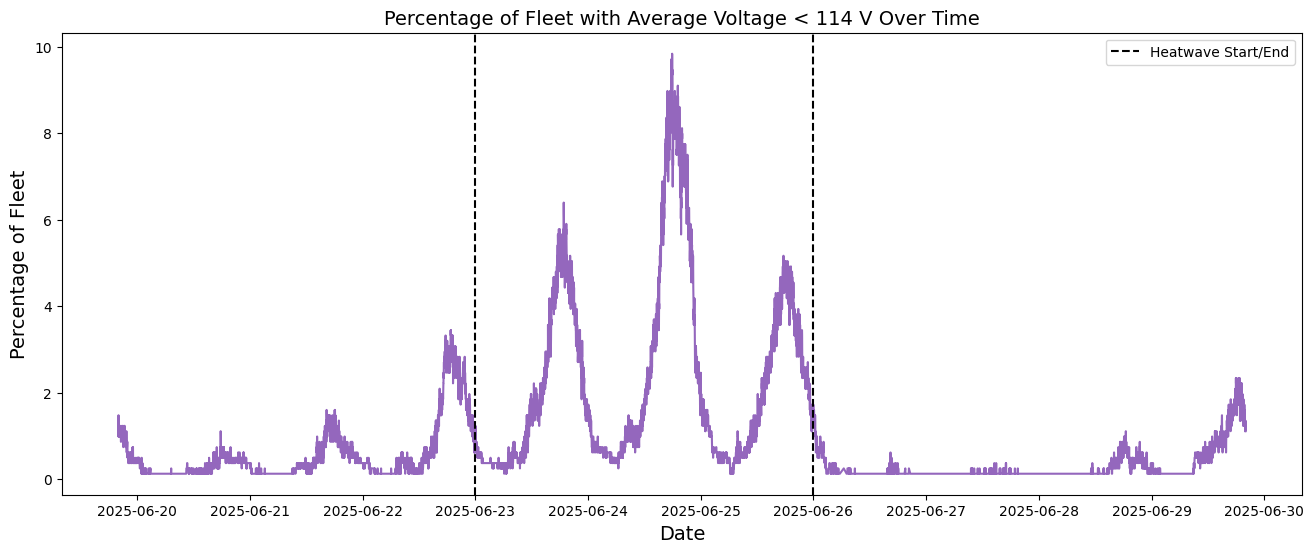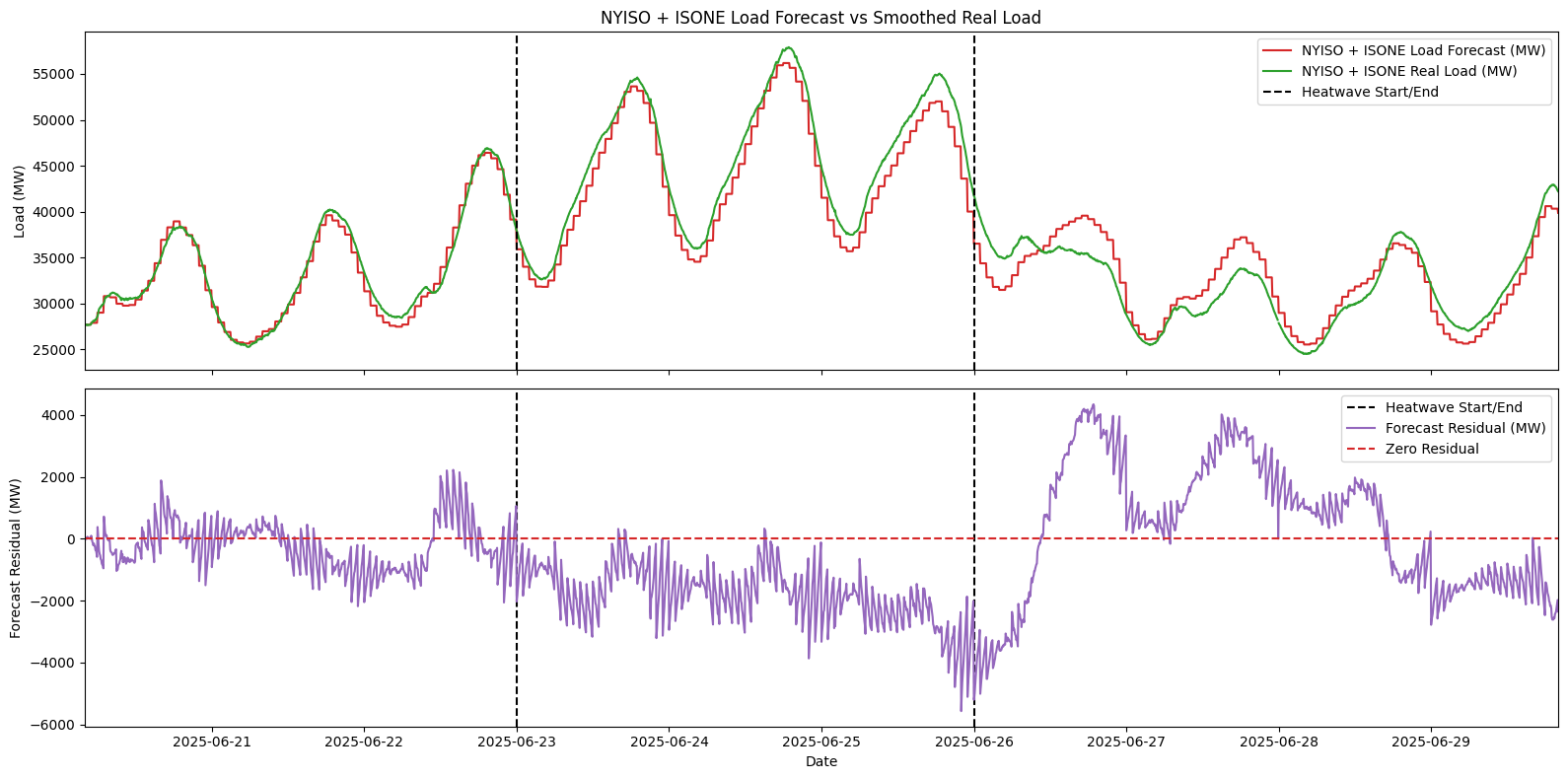This is the first in a series of blog posts from the SPAN Engineering team, sharing some of the interesting things we learn from our fleet.
In late June 2025, a record-breaking heatwave swept across the United States specifically impacting cities and townships in the Northeast and New England[1]. Temperatures rose to over 100oF in parts of the Northeast with the worst of the heatwave landing between Jun 23, 2025 and Jun 25, 2025.

During this period, we observed a large uptick in voltage sags across our fleet of panels. These voltage sags were sustained over several hours on each of the most extreme temperature days. Voltage sags are events where distribution voltages fall below “normal” voltage levels which is 120V for most residential buildings. Voltage sags are specifically hazardous as they can result in reduced appliance efficiencies and lead to damaged air compressor-based appliances[2,3]. Most appliances are designed to function efficiently in a range of +5% to -10% of the 120V nominal voltage and at least partially function between +5.8% and -13.3% of nominal voltage[4].

We observe our fleet of panels that fall under the jurisdiction of ISO-NE and NYISO, two independent system operators (ISOs) that are responsible for maintaining grid operations and facilitating electricity markets in the Northeast and New York. These voltage data are 1-minute aggregated measurements of L1 and L2 grid voltages. A cursory view of average voltages shows fleet average voltages dropping below the nominal 120V for extended periods of time each day during the heatwave.

While a single panel falling below 120V is not concerning, we typically observe an average fleet voltage of 122V during normal operations so a fleet-wide drop below 120V indicates that many panels likely saw significantly lower voltages. Calculating the proportion of voltage sags under -5% (<114V, an arbitrary threshold), we see spikes corresponding to the hottest days with the highest peak on the hottest day, Jun 24, 2025.

While these voltage sags are not in the range where compressor-based appliances would likely start to see damage, the elevated count of panels experiencing voltage sags suggest a meaningful correlation between high temperature events and grid strain. If we lower this threshold to a more defined -13.3% of nominal voltage (104.4V) as detailed in ANSI 84.1[4], we see an order of magnitude reduction in the number of panels experiencing such voltage sags:

Here, as with the higher threshold, we see an increased number of voltage sags measured at homes. This also only demonstrates simultaneous voltage sags. Over the whole event, over 17% of homes experienced voltage sags greater than -10% while over 14% of homes experienced at least one voltage sag less than -13.3%. This is a significant number of homes experiencing potentially severe voltage sags that, when scaled over more homes, could indicate widespread appliance damages. These data are from 1-minute aggregations so we are likely heavily underestimating the number of lower-duration voltage sags. A home experiencing a voltage sag greater than 13.3% for over a minute (>1000s of cycles) would very likely see some adverse impacts to certain appliances and electric equipment[5]. We also see significant impacts of the heatwave on the grid from a system operator perspective.
Published data from ISO-NE and NYISO day-ahead forecast and real-time load during this period corroborate our understanding of how temperature events affect the grid— during the heatwave, the ISOs see significantly increased demand. Additionally, these ISOs under-forecasted demand, indicated by the negative residual by approximately 2-4 GW. While the high demand alone is likely enough to have led to the voltage sags[6], under-forecasting load in these already high-stress times may lead to under-scheduling of generation resources and the eventual increased need for expensive ancillary services to fill the generation gap.

Ancillary services are secondary services used by system operators to maintain the reliability of the grid[7]. These are typically generators that can start-up and ramp generation quickly to meet any unfulfilled demand, ultimately aiding in the stabilization of voltage and frequency. During the heatwave, as demand peaked, we see corresponding spikes in the 10-minute spinning reserve prices, some even reaching over $2000/MWh. The high costs during this period indicate that peaking plants[8], expensive and low-use generators, were extensively dispatched to supply the frequently unmet load. While these high prices are not directly passed onto residential consumers, load service entities (LSEs) like Consolidated Edison (ConEd) and other utilities have to factor them into their operational costs and can be included in future electricity prices.

Even with this extra generation from ancillary services, demand during the heatwave strained infrastructure to a point where ConEd intentionally reduced grid voltages[9] to relieve some of the stress. This solution is not ideal due to some of the previously mentioned adverse effects that reduced voltage can have on appliances. To combat these issues without affecting voltages, LSEs can employ two methods: increasing electricity supply or reducing demand.
Increasing supply involves dispatching more generators and is already partially addressed with ancillary services. Additionally, with the grid already being strained under heatwave conditions[10], this may be untenable in the short-term and require larger infrastructure upgrades to transmission and distribution systems. LSEs can also reduce demand through demand-response programs like the PG&E Seasonal Aggregation of Versatile Energy (SAVE) pilot in which SPAN homes are participating[11]. In these programs, residential demand is curtailed by energy end-users, such as homeowners, typically in exchange for some incentive. When this reduction in consumption is applied over many homes, the homes act as a ‘virtual power plant', effectively serving as an additional asset to balance supply and demand.
Even small reductions in demand at each home can have large impacts on aggregate demand. In an electrified future where infrastructure is increasingly strained by the changing climate, solutions are needed on all sides for a more reliable power system. SPAN offers smart home energy management solutions that bridge the gap between not compromising homeowner comfort and a more adaptable and resilient grid.
Sources
[1] Assessing the U.S. Climate in June 2025
[3] Can Low Voltage Damage Your Air Conditioner? - A1 Mechanical
[4] Voltage Tolerance Standard – ANSI C84.1
[5] https://pdfs.semanticscholar.org/563b/66b33104a0cafe4c7297abc837737b2951db.pdf
[6] The Grid: Electricity Transmission, Industry, and Markets
[7] Ancillary Services - NYISO
[8] What Is a Peaking Power Plant? | Enel North America
[9] Voltage Reduction Status | Con Edison
[10] Amid extreme heat, some power grids may struggle to keep up with rising energy demand
[11] PG&E Launches Seasonal Aggregation of Versatile Energy (SAVE) Virtual Power Plant Program
.avif)







.png)
.png)








